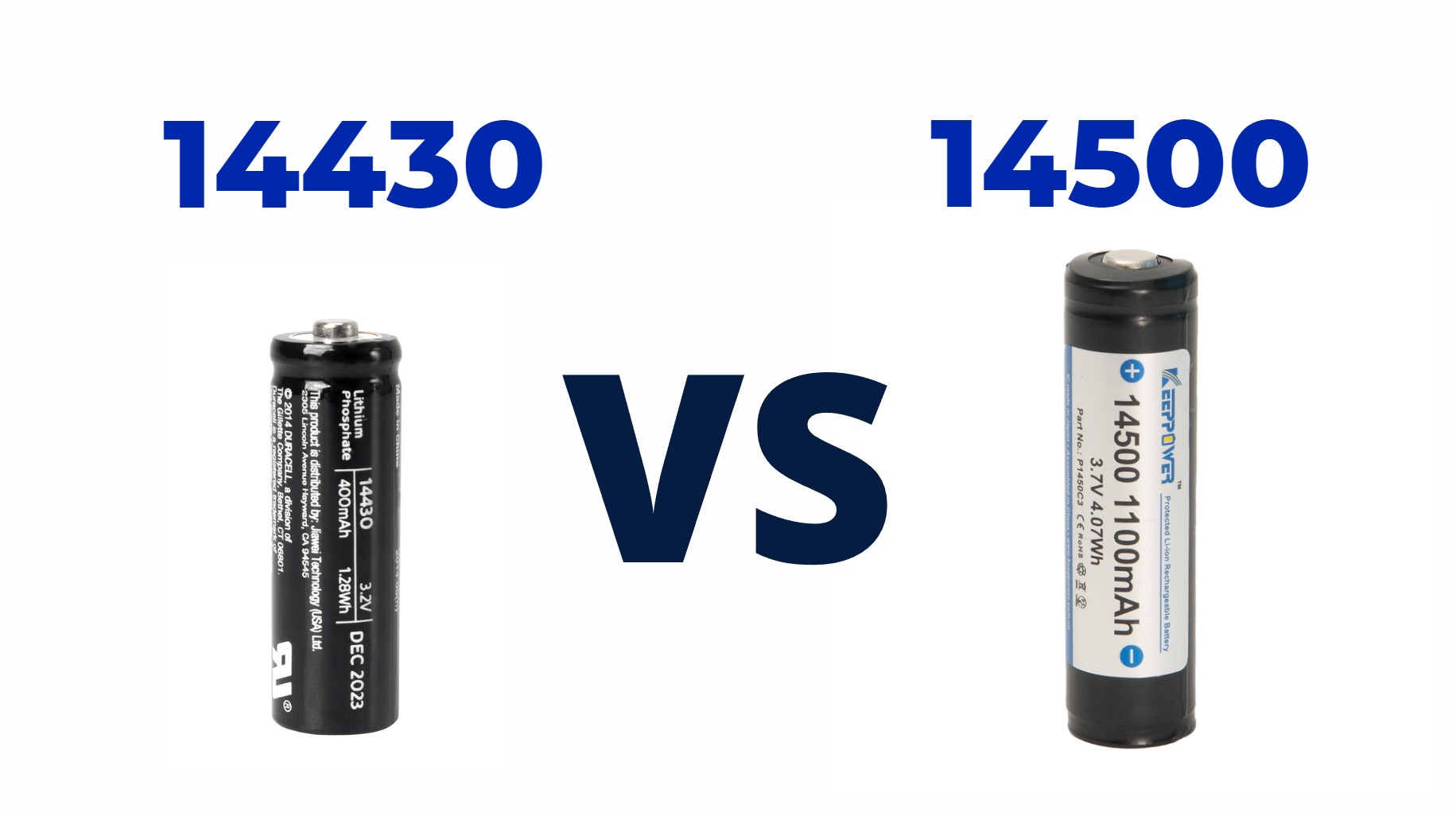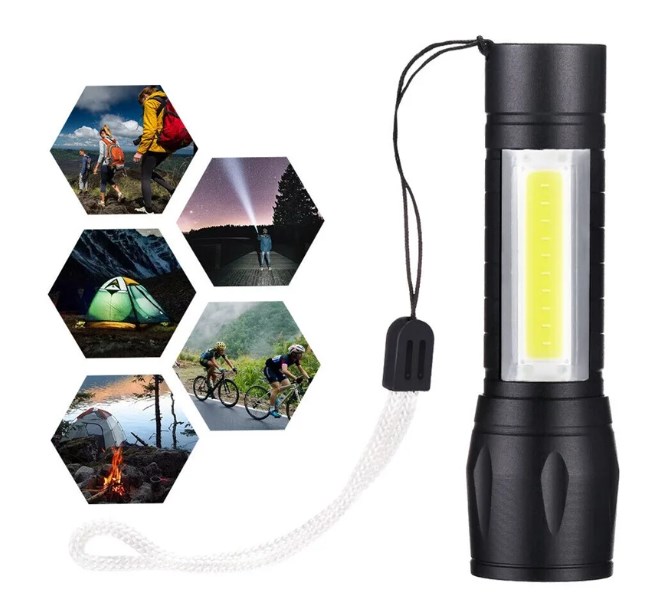Yes, there are significant performance differences. The 14500 battery provides higher voltage (3.7V) and capacity, making it suitable for high-drain applications like flashlights. In contrast, the 14430 battery has lower capacity and is often used in smaller devices, resulting in shorter usage times.
When it comes to rechargeable batteries, understanding the performance differences between various types is crucial for selecting the right power source for your devices. In this article, we will explore the 14500 and 14430 batteries, two popular lithium-ion battery formats, and highlight their significant performance differences.
The 14500 and 14430 batteries have significant performance differences. The 14500 battery offers higher energy capacity and discharge rates, making it ideal for high-drain devices that require sustained power and quick bursts of energy. It provides longer run times compared to the 14430 battery. On the other hand, the 14430 battery has a lower energy capacity and discharge rates, making it suitable for low-drain devices. Understanding these performance differences helps users choose the appropriate battery type for their specific applications.
Yes, significant performance differences exist; 14500 batteries provide higher capacity and longer runtimes than 14430 batteries. However, 14430s are more compact, making them suitable for devices where space is limited but may require more frequent replacements.
Overview of Battery Specifications
Before diving into performance, let’s briefly examine the specifications of both battery types:
- 14500 Battery:
- Diameter: 14 mm
- Length: 50 mm
- Typical Capacity: 1200 to 2500 mAh
- 14430 Battery:
- Diameter: 14 mm
- Length: 43 mm
- Typical Capacity: 600 to 1200 mAh
Key Performance Differences
1. Energy Capacity
The most significant difference between the two batteries lies in their energy capacity:
- The 14500 battery typically offers a capacity range of 1200 to 2500 mAh, allowing it to store more energy. This higher capacity translates to longer run times, making it ideal for high-drain devices such as flashlights, power tools, and other electronics that require sustained power.
- In contrast, the 14430 battery has a lower capacity range of 600 to 1200 mAh, which limits its energy storage capabilities. This makes it more suitable for low-drain devices where extended usage is not as critical.
2. Discharge Rates
Discharge rates are another critical factor affecting performance:
- The 14500 battery can typically deliver higher discharge rates due to its larger capacity. This characteristic is essential for devices that demand quick bursts of energy, such as digital cameras or high-performance flashlights.
- The 14430 battery, while still capable of discharging energy effectively, may not provide the same level of performance under high-drain conditions. It is better suited for devices with lower energy requirements.
3. Run Time
Run time is directly influenced by both capacity and discharge rates:
- Users can expect significantly longer run times from the 14500 battery compared to the 14430 battery. For instance, a device utilizing a 14500 battery may operate continuously for several hours before needing a recharge, depending on its energy consumption.
- Conversely, devices powered by a 14430 battery will require more frequent recharging, particularly if they are used in applications that draw power consistently.
Applications Based on Performance
Understanding the performance differences allows us to determine suitable applications for each battery type:
14500 Battery Applications
Given its superior performance characteristics, the 14500 battery is ideal for:
- High-drain devices such as:
- LED flashlights
- Power tools
- Digital cameras
- Electric vehicles (in some cases)
These applications benefit from the extended run time and higher energy output provided by the larger capacity of the 14500 battery.
14430 Battery Applications
The more compact and lower-capacity nature of the 14430 battery makes it suitable for:
- Low-drain devices such as:
- Remote controls
- Small electronic toys
- Medical devices
- Some compact flashlights
These applications do not require extensive power and can function effectively with the lesser capacity offered by the 14430 battery.
Visual Comparison Chart
| Feature | 14500 Battery | 14430 Battery |
|---|---|---|
| Diameter | 14 mm | 14 mm |
| Length | 50 mm | 43 mm |
| Typical Capacity | 1200 to 2500 mAh | 600 to 1200 mAh |
| Discharge Rate | Higher | Lower |
| Run Time | Longer | Shorter |
| Typical Applications | High-drain devices | Low-drain devices |
Recent Developments in Battery Technology
As of October 2024, advancements in lithium-ion technology continue to evolve rapidly:
- New formulations are being developed that enhance both capacity and efficiency in existing sizes like the 14500 and 14430. These innovations promise improved performance metrics across various applications.
- Additionally, there is an increasing emphasis on sustainability within the industry. Manufacturers are exploring eco-friendly materials and processes that reduce environmental impact while maintaining high-performance standards.
Conclusion
In summary, there are significant performance differences between the 14500 and 14430 batteries. The larger capacity and higher discharge rates of the 14500 battery make it suitable for high-drain applications requiring longer run times and greater energy output. In contrast, the smaller capacity of the 14430 battery limits its use to low-drain devices where less power is needed. Understanding these distinctions ensures that users select the appropriate battery type for their specific needs.
FAQs
Can I use a 14500 battery in place of a 14430 battery?
No, due to size differences and varying capacities, they are not interchangeable.
What types of devices typically use a 14500 battery?
High-drain devices such as LED flashlights and digital cameras commonly utilize the larger capacity of a 14500 battery.
Are there advantages to using a smaller battery like the 14430?
Yes, smaller batteries like the 14430 are ideal for low-drain applications where space is limited and less power is required.
What are the advantages of using 14500 batteries in high-drain devices?
14500 batteries provide higher voltage (3.7V) and capacity compared to standard AA batteries, making them ideal for high-drain devices like flashlights and vape pens. Their rechargeable nature also reduces the need for frequent replacements, offering better performance in power-demanding applications.
How does the lifespan of 14500 batteries compare to 14430 batteries?
14500 batteries generally have a longer lifespan than 14430 batteries due to their larger capacity. Both types are rechargeable, but the 14500 can typically deliver more charge cycles and hold more energy, resulting in better overall longevity.
Are there any specific brands known for producing high-quality 14500 batteries?
Brands like Nitecore, Efest, and Olight are known for producing high-quality 14500 batteries. These manufacturers offer reliable, long-lasting batteries that are popular for use in high-drain devices, ensuring performance and safety.
What are the cost differences between 14500 and 14430 batteries?
14500 batteries are usually slightly more expensive than 14430 batteries due to their higher capacity and voltage. The price difference is generally marginal but varies depending on the brand and retailer, making 14500 batteries a better value for devices that require more power.
How do 14500 batteries perform in extreme temperatures?
14500 batteries can experience reduced performance in extreme temperatures, especially in very cold environments. However, high-quality 14500 batteries from reputable brands often include protection circuits to mitigate temperature-related issues, making them more resilient than standard batteries in harsh conditions.
Related:
How Do the Capacities of 14500 and 14430 Batteries Compare?
Are There Any Significant Performance Differences Between 14500 and 14430 Batteries?
What Are the Typical Uses for 14500 Batteries in Everyday Devices?
How Do the Dimensions of 14500 and 14430 Batteries Differ?
What Are the Main Applications for 14500 and 14430 Batteries?







